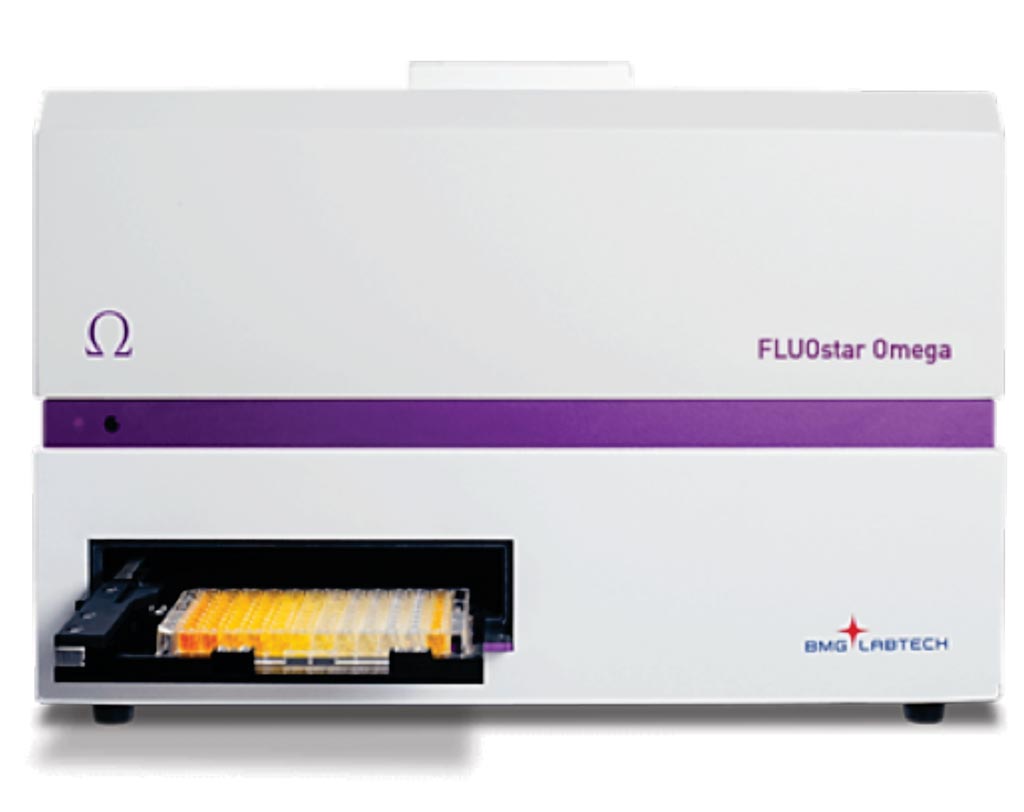Test Detects Protein Associated with Alzheimer’s and CTE
By LabMedica International staff writers
Posted on 09 Jan 2019
An ultrasensitive test has been developed that detects a corrupted protein associated with Alzheimer’s disease and chronic traumatic encephalopathy (CTE). This advance could lead to early diagnosis of these conditions and how they originate.Posted on 09 Jan 2019
Alzheimer disease (AD) afflicts 5.7 million people in the USA alone and their care is estimated to cost USD 232 billion annually. Like other proteins involved in neurological diseases, tau protein clusters can seed themselves and contribute substantially to the disease processes of Alzheimer’s and CTE. The diagnostic test originally developed for prion diseases to detect abnormal clusters of tau protein.

Image: The FLUOstar Omega is a multi-mode microplate reader and has six detection modes (Photo courtesy of BMG LabTech).
A team of scientists collaborating with the Rocky Mountain Laboratories (NIAID, Hamilton, MT, USA) analyzed brain samples from 16 Alzheimer’s patients, two boxers with CTE, and numerous control cases involving other brain diseases. Tissue samples for neuropathological studies were obtained from representative brain regions. The following methods were used: Weigert’s hematoxylin–eosin, Woelcke–Heidenhain, Bodian, Gallyas, and thioflavin S. For immunohistochemistry, antibodies against tau, Aβ, glial fibrillary acidic protein (GFAP), prion protein, ubiquitin, and TAR DNA-binding protein-43 (TDP-43) were used.
To probe the molecular basis for AD’s tau filament propagation and to improve detection of tau aggregates as potential biomarkers, the team exploited the seeded polymerization growth mechanism of tau filaments to develop a highly selective and ultrasensitive cell-free tau seed amplification assay optimized for AD (AD real-time quaking-induced conversion or AD RT-QuIC). The reaction is based on the ability of AD tau aggregates to seed the formation of amyloid fibrils made of certain recombinant tau fragments and read on a BMG FLUOstar plate reader.
The investigators reported that AD RT-QuIC detected seeding activity in all AD brains at dilutions as extreme as 107–1010-fold, but was 102–106-fold less responsive when seeded with brain from most cases of other types of tauopathy with comparable loads of predominant three-repeat (3R) or four-repeat (4R) tau aggregates. The CTE brains had seed concentrations comparable to the weakest of the AD specimens, and higher than three of four specimens with 3R/4R primary age-related tauopathy. AD seeds shared properties with the tau filaments found in AD brains, as AD seeds were sarkosyl-insoluble, protease resistant, and reactive with tau antibodies. AD RT-QuIC detected as little as 16 fg of pure synthetic tau fibrils.
The authors concluded that the distinctive seeding activity exhibited by AD and CTE tau filaments compared to other types of tauopathies in these seeded polymerization reactions provides a mechanistic basis for their consistent propagation as specific conformers in patients with 3R/4R tau diseases. Importantly, AD RT-QuIC also provides rapid ultrasensitive quantitation of 3R/4R tau-seeding activity as a biomarker. The study was published on December 20, 2018, in the journal Acta Neuropathologica.
Related Links:
Rocky Mountain Laboratories










 (3) (1).png)



